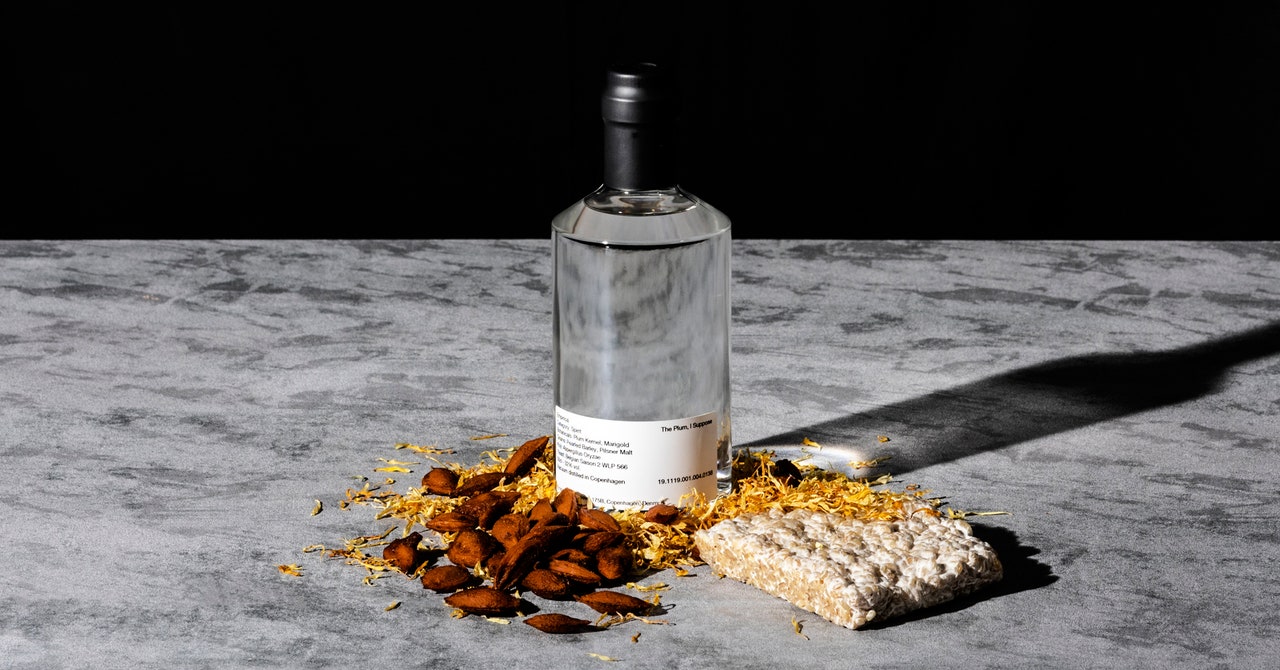
When Lars Williams and Mark Emil Hermansen founded the Denmark-based microdistillery Empirical Spirits four years ago, they weren’t actually sure what they were making. For weeks, the two men—veterans of the haute-weird restaurant Noma, where Williams ran research and development and Hermansen was the “concept manager”—thought they were making a gin. It was clear and full of plant-y, botanical flavors. But it didn’t have any juniper in it. “And someone from the industry said, ‘You can’t call it a gin,’” Williams says. So: not gin.
They also thought they were making a whiskey. It was smoky, like whiskeys from the island of Islay, of Scotland. And it was brown, because they aged it in a barrel that had once held sherry. But this one did have juniper—which they had smoked before adding to the mix. “And so we couldn’t call it a whiskey,” Williams says. “So we were just like, ‘Pssh, fuck it.’” They bottled it anyway.
Today Empirical makes a half-dozen spirits, and only one of them fits the classic dozen or so categories you’d see on signs above the aisles in a BevMo. Their newest, Ehime, is definitely bourbon-like—brown, made from grain, aged in a barrel. (It’s also partially fermented with koji, the fungus that makes sake.) This booze is sui generis, made from substrates as varied as plum pits, pasilla Mixe chiles, and kombucha, distilled not in a steampunk copper pot but in a vacuum still plucked from a chemistry lab. The company has also started selling fizzy, boozy canned drinks that I suppose fit into the modern category of “hard seltzer,” except where White Claw might offer, say, mango, Empirical touts flavor combinations like oolong tea, gooseberry, and walnut wood.
It’s weird, yeah—but maybe the weirdest thing about all this atypical, unclassifiable booze is how normal it actually is. Spirits are going through a kind of a biotechnical revolution, an application of new methods and a rediscovery of old ones, applied to classic and unfamiliar ingredients alike. The result is shelves stocked with products aimed at more diverse, novelty-seeking customers. And those products also (bonus!) support sustainability in the face of climate change, as well. The future of drinking might be here—just unevenly distributed to rarified and high-end bars and liquor stores.
That future may seem dark, but it hasn’t yet quashed Williams and Hermansen’s theatrical side—probably born out of working at Noma during the peak years of the molecular gastronomy movement. “Flavor has such a poor vernacular, and we have few words for talking about it,” Williams says. “So I fall back on literature. You have peaks and moments of crisis and moments of joy to create a captivating narrative. We want people to go on a journey.” Professional booze tasters often talk (sometimes snootily) about a drink’s nose, taste, mouthfeel, and finish. So Williams has a point. Those things happen sequentially and add up to an experience, just like chapters in a book or acts in a movie. And that sensory experience will be different as it sits in the glass … and sometimes after it has spent a long time in a bottle, though that’s a little less favored because it’s harder for the makers to control.
Distilling as a process has a similar kind of temporality. Spirit-makers start with a substrate—fruit or grain, generally. They want to ferment it, which means letting yeast eat the sugars inside to convert them to alcohol. But yeasts don’t eat every kind of sugar; in grains they’re locked up behind a coat of protein and built into polymers called starches, inedible to yeast. “Malting” is one way to turn those starches into sugar, by letting the grain germinate a little bit first. Turn that into sugary liquid and you can run it through a still—usually a big copper pot or tall column that uses heat to separate lighter molecules from heavier ones. Bluntly, the alcohols evaporate first and leave the water behind, carrying all kinds of other alcohol-soluble, flavorful chemicals over the top of the still with them. Sometimes you might also put what comes out of the still into a wood barrel to oxidize and acquire some of the flavors in wood too. (The chemistry of aging is, ironically, a long story.)


